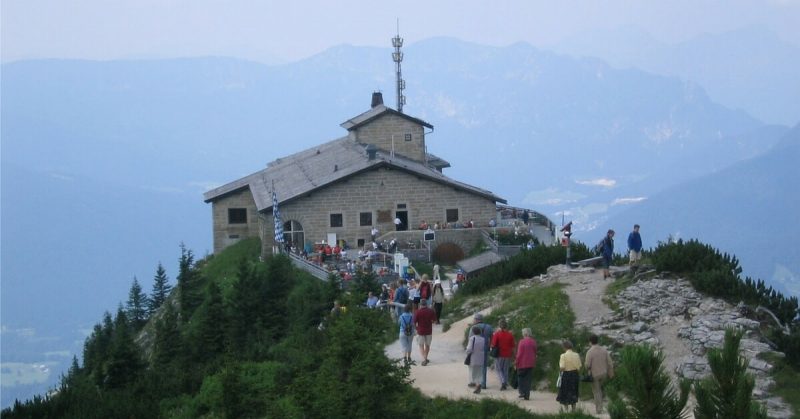When planning to visit Germany, there are countless WWII locations from which to choose. To make planning easier for you, we have made a list of the 10 locations that we feel should be on your list.
We’ve tried to give you the full package that encompasses the entire history; from the birth of the Nazi ideology in Nuremberg and Munchen to its death in Berlin. We’ve covered everything from the development of the V-2 rockets to the Dachau concentration camp.
Party rally grounds, Nuremberg
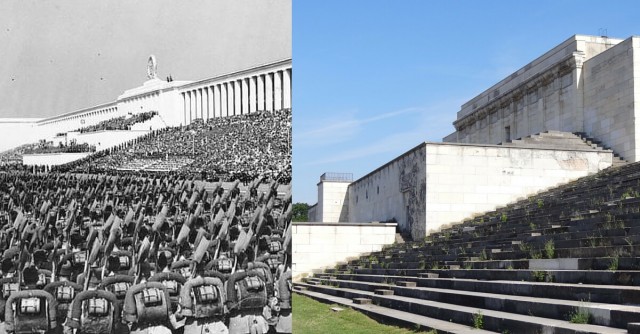
Hitler described Nuremberg as the ‘Heart of the Third Reich,’ so it makes sense that he would build the Nazis’ main rally ground around 11kms outside the city. Nuremberg is in Germany’s southwest, where Nazism grew from its modest beginnings to the party that took over the government.
The rally grounds are situated on six square miles. They include 24 towers and the balcony, known as the Zeppelin Tribune, where Hitler would stand to make speeches and address his party. In the arena, around 150,000 people could gather to salute their leader. The ground’s design was based on, but bigger than, the Colosseum in Rome.
Between 1933 and 1938 six Nazi rallies were held at the grounds. The sheer size and scale of the rallies were immense. The events were carefully planned and arranged so that they would portray an inspiring performance.
Since the end of the Second World War the German government, the Bavarian state, and the Nuremberg city authorities have all grappled with the challenge of what to do about these remaining infrastructures from the Nazi past
Visit information:
Address: Bayernstraße 110, 90478 Nürnberg, Germany
Hours: 9AM–6PM
Phone: +49 911 2317538
Wewelsburg Castle, Büren
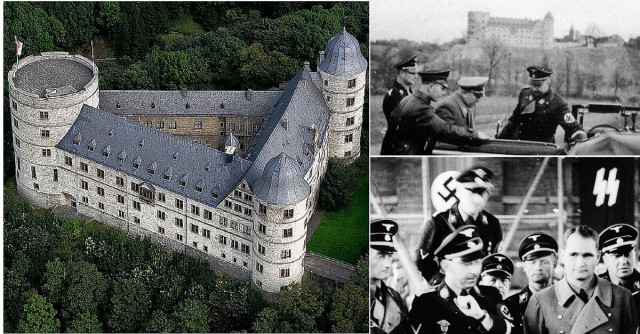
Wewelsburg Castle had served as Heinrich Himmler’s home and the SS’s headquarters throughout the Nazis’ reign in Germany. Heinrich Himmler, an ardent occult practitioner, and believer, he filled the castle with symbols that showed his fascination with the supernatural realm.
Significantly, its location is near what was then believed to be the site of the Battle of the Teutoburg Forest. Legend suggests that the castle held thousands of accused witches during the 17th century, who were tortured and executed within its walls.
Of course, no proof exists that Himmler wanted a Holy Grail castle, but the redesign of the castle by the SS referred to certain characters in the legends of the Grail: for example, one of the arranged study rooms was named Grail, and others, King Arthur, King Henry, Henry the Lion.
Visit information:
Address: Burgwall 19, 33142 Büren, Germany
Hours: 10AM–5PM
Phone: +49 2955 76220
Website: http://www.wewelsburg.de/en/
Fuhrerbunker, Berlin
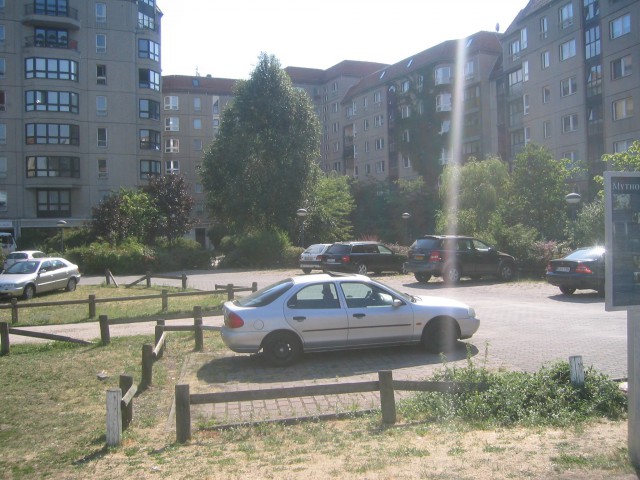
A parking lot now sits where Adolf Hitler’s Reich Chancellery once stood, in the center of Berlin. It is long gone thanks to Soviet troops liberating Berlin marking the end of World War II in Europe. But another infamous structure stood at this spot as well. There are no signs or commemorative placards of the building as many people have chosen to put the past behind them.
The present location of the infamous Fuhrerbunker, the location in which Hitler and his companion Eva Braun committed suicide is located beneath this parking lot with a sign stating the significance of the bunker under a patch of grass, of where Hitler spent his last month.
The Fuhrerbunker was originally intended as an air raid shelter, but as the war turned in favor of the allies, the shelter was extended into a much larger complex.
In 1947 the bunker’s ventilation towers were destroyed but other than that the complex was simply sealed off. Additional demolition occurred in 1959 but as the site was located close to the Berlin Wall, within the East Germany side of the Wall and was included in an area that was left mostly undeveloped and untouched.
It was not until the late 1980s that the East German administration began building on the site in an attempt to wipe out all trace of the past. Today, it is thought that there are still a few corridors to have survived but are sealed off from the public.
Visit information:
Address: In den Ministergärten, 10117 Berlin, Germany
The Holocaust memorial is located nearby and should also be visited.
Berghof, Berchtesgaden
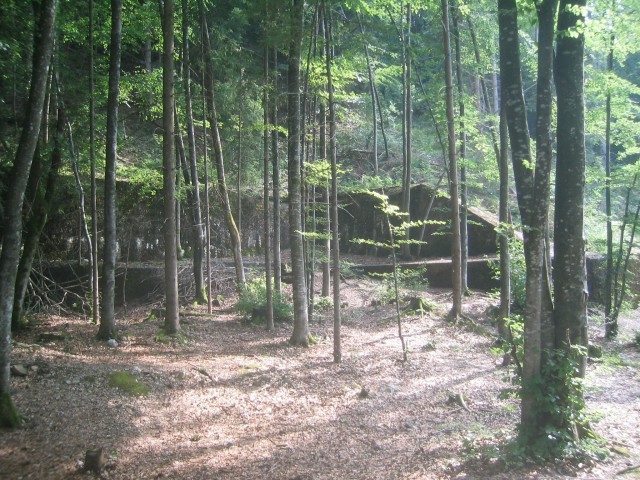
Hitler had always been attracted to the Obersaltzberg, the mountain overlooking Berchtesgaden. In the 1920s, he had rented a house there and in the 1930s he bought Haus Wachenfeld. This was rebuild into the Berghof in which he spent a large part of the war. Being close to Hitler was very important for the Nazi Party chiefs, and they moved into this area too, turning a lovely mountain into a Nazi powerhouse.
The Obersalzberg was bombed by hundreds of British Lancaster bombers on 25 April 1945, 12 days before the surrender of German forces on 7 May. At least two bombs struck the Berghof. On 4 May, four days after Hitler’s suicide in Berlin, departing SS troops set fire to the villa. Only hours later, the U.S. 3rd Infantry Division arrived at Berchtesgaden along with the French 2nd Armoured Division.
The ruined Berghof would remain in this state for seven years until it was finally blown up in 1952 the location was then used as to dump the remains of the other buildings . The garage remained standing until 1995. The ruins were further obliterated during the 1990s and early 2000s. By 2007, trees had overgrown the site and only scattered rubble, and the top of a retaining wall are still visible.
Visit information:
Address: Hintereck 2, 83471 Berchtesgaden, Germany
Eagles nest / Kehlsteinhaus, Berchtesgaden
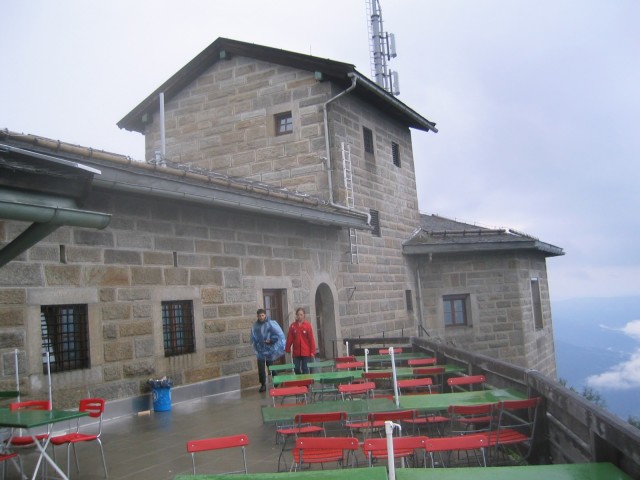
The Kehlsteinhaus or Eagles Nest as the allies called it, is situated on a ridge atop the Kehlstein mountain which towers above the town of Berchtesgaden. It was commissioned by Martin Bormann in the summer of 1937 as a 50th birthday gift for Adolf Hitler and was paid for by the Nazi Party. It was completed in just 13 months and an approach road had to be built which climbs 2,600 ft over 4.0 miles towards a car park near the top.
From a large car park, an entry tunnel leads to an ornate and previously gold-plated elevator which ascends the final 407 feet to the building. A massive red Italian marble fireplace, a gift from Benito Mussolini, dominates the building’s main reception room. It has been damaged by Allied soldiers who chipped off pieces of the marble to take home as souvenirs.
The building is now a restaurant which offers indoor dining and an outdoor beer garden. It is now a big tourist attraction with thousands of visitors ascending to the top every day admiring the same view that Hitler once enjoyed. Inside the Kehlsteinhouse are a number of information signs telling the story of how it was built and the use for the Nazi party.
Buses transport the tourists up to the parking lot, the road has been closed to private vehicles since 1952. There is also a footpath leading up, in about 3 hours you can walk up to the Eagles Nest and then enjoy a well deserved drink.
Visit information:
Address: Kehlsteinhaus, 83471 Berchtesgaden, Germany
Open daily from May to September
Website: http://www.kehlsteinhaus.de/en/
Dachau Concentration camp
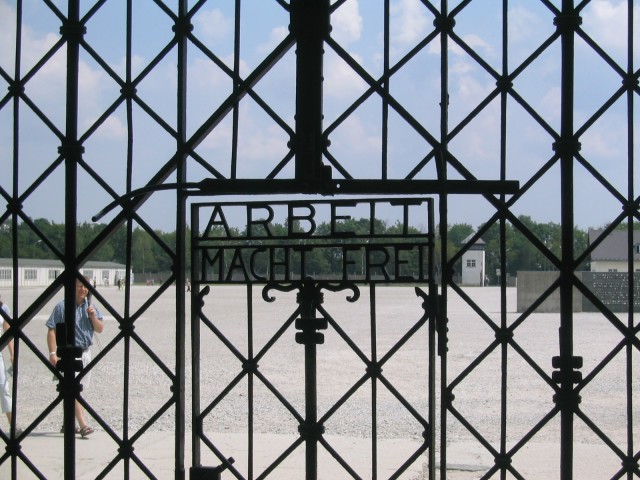
The infamous Nazi concentration camp in Dachau is found in the northeastern part of the town, and it has become an important tourist destination.
Immediately after successfully taking control of the reigns of the county in 1933, Adolf Hitler ordered to open the camp in Dachau. Dachau camp was the very first concentration camp in Europe and became a standard model for many others to follow including the infamous ‘Auschwitz.’
Over 200,000 prisoners have been locked up in Dachau from the foundation until its liberation in April 1945. 41,500 of this number died due to starvation, disease, and results of brutality.
In 1965 the Memorial Site on the grounds of the former concentration camp was established on the initiative of and in accordance with the plans of the surviving prisoners who had joined to form the Comité International de Dachau. The Bavarian state government provided financial support.
Visit information:
Address: Alte Römerstraße 75, 85221 Dachau, Germany
Phone:+49 8131 669970
Hours: 9AM–5PM
Website: https://www.kz-gedenkstaette-dachau.de/index-e.html
Peenemunde research facility
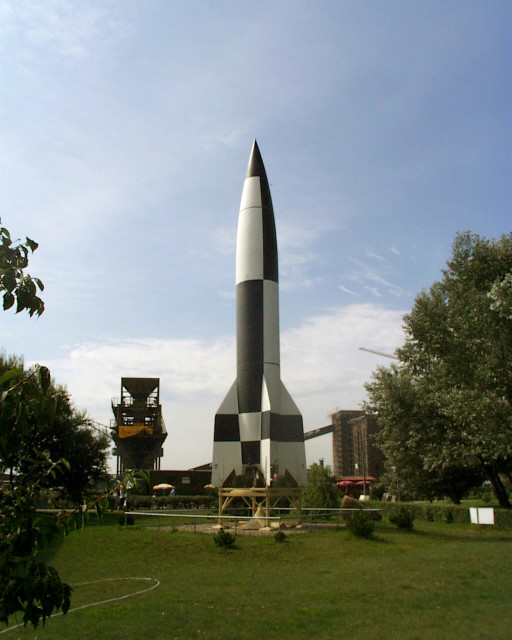
The Peenemünde Military Test Site established in 138 and it became one of the most modern technological facilities in the world. Several German guided missiles and rockets of World War II were developed and the first launch of a V-2 missile into space took place here in October 1942.
Engineers tested numerous flight objects equipped with revolutionary technology in the nearby air force testing area. The goal of the Peenemünde Military Test Site was simple and clear cut; achieve military superiority through advanced technology.
The construction of the test sites and the later serial production of the rockets was done by concentration camp inmates, prisoners of war and slave laborers. This vast pool of humans enabled the Nazis to get the V-2 into operational status is a very short period of time.
This came at a massive cost, inhumane living and labor conditions coupled with the frequent bombing of the test site by the Allies took a heavy toll, causing the death of countless humans.
The Peenemünde Historical Technical Museum is housed in the power station of the former Army Testing Site – the largest technical monument in the German state of Mecklenburg-Vorpommern. The Museum serves as an international meeting place and cultural venue. In 2002, the museum was awarded the Coventry Cross of Nails for its efforts toward reconciliation and world peace.
Visit information:
Historisch-Technisches Museum Peenemünde GmbH
Address: Im Kraftwerk, 17449 Peenemünde, GERMANY
Telephone: +49 38371 505 0
Website: http://www.peenemuende.de/en/
Hurtgenwald
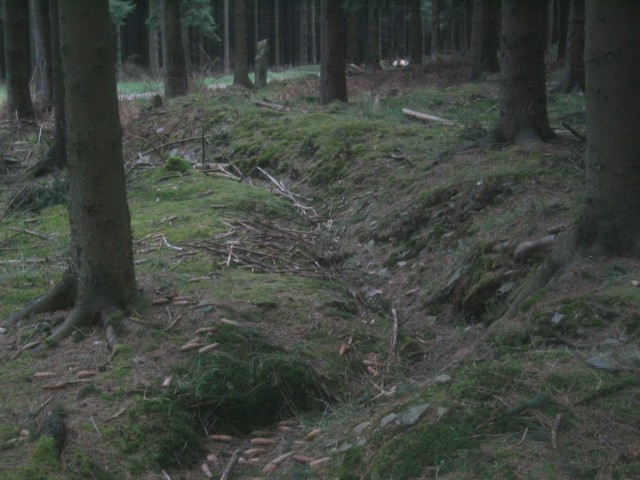
The Battle of Hürtgen Forest was the longest battle on German ground that was fought during the second world war, it lasted from 19 September 1944 to 10 February 1945. The U.S. First army tried to push through the forest and secure two Rur dams which, if opened, could sweep away an Allied bridgehead further downstream.
In 5 months of bitter fighting in the worst imaginable conditions, the U.S. First Army lost at least 33,000 killed and wounded, the German casualties were around 28,000.
Because there was no glory in the Hürtgen Forest, only death and destruction fighting an elusive and well-entrenched enemy in a damp, dark and muddy forest, the battle is largely forgotten. The Battle of the Bulge received far more media attention and ended in a glorious victory, thus it has overshadowed the Hurtgenwald ever since.
To remember the battle, the Museum of Hürtgen Forest 1944 and in Peacetime tells the story of this battle and its consequences for the local population. The museum is run by volunteers and almost all objects in the exhibition were collected in the Hürtgen Forest area after the war.
Nearby in the forest monuments, trenches, and demolished bunker can be visited.
Visit Information:
Address: Pfarrer-Dickmann-Str. 21-23, 52393 Hürtgenwald-Vossenack, Germany
Hours: Sundays 11.00-17.00 (March-November)
Phone: +492429 90 26 13
Website: http://www.museum-huertgenwald.de/
Königplatz, Munich
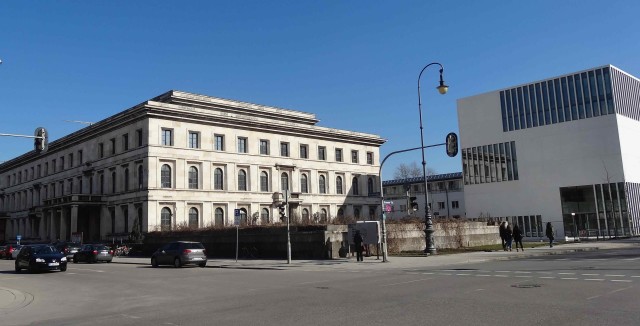
In the heart of Munchen lies a large square called the Königplatz, during the Third Reich it formed the administrative heart of the Nazi Party and mass rallies were held here. Located just off the Königplatz was the Brown House, where the National headquarters of the Nazi Party was located.
On the east side of the Königplatz the Nazis erected two Honor Temples in which they “enshrined” the remains of the sixteen Nazis that were killed in the 1923 Beer Hall Putsch. In 1947, the U.S Army demolished both temples and removed those buried there, but their platforms remain to this day.
Next to the temples, two buildings of the Nazi party constructed by Paul Troost still exist. In the Führerbau, visible on the photo above, the Munich Agreement was signed in 1938 and is now a school for music and theater.
On 1 May 2015, on the former location of the Braun Hause, the new Munich Documentation Centre for the History of National Socialism opened. It is as a place of education and remembrance documenting and addressing the crimes of the Nazi dictatorship and their origins, manifestations, and consequences right up to the present day.
Visit Information:
Address: Königplatz, Munich, Germany
Hours: Tuesday to Sunday 10 am – 7 pm
Website: http://www.ns-dokuzentrum-muenchen.de/1/home/
Feldhernhalle, Munich
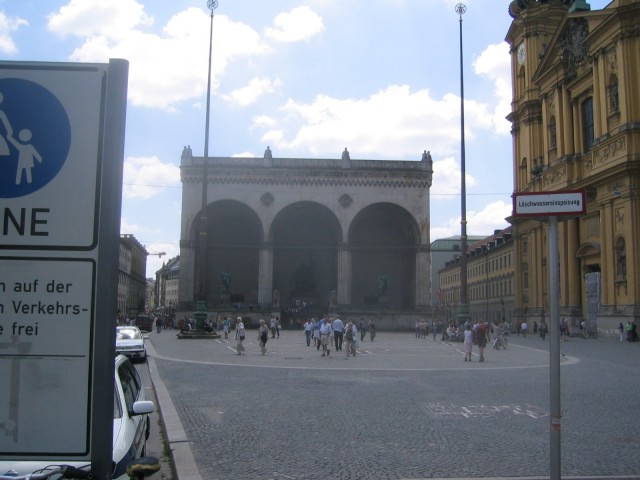
Close to the Königplatz, on the Odeonsplatz in Munich, the Feldherrnhalle is located. In 1841 it was commissioned by King Ludwig I of Bavaria to honor the tradition of his army.
It was at the Feldherrnhalle, or Field Marshals Halls, that on the morning of November 9th, 1923, Adolf Hitler’s “Beer Hall Putsch” came to a bloody end.
The Bavarian State Police halted the illegally organized march by the followers of Adolf Hitler here, which was the last desperate attempt to take over the Bavarian State.
The Nazi’s participation in the march were order to stop but continued so the State Police felt threatened and opened fire. Sixteen marchers and four policemen were killed in the ensuing gun battle.
Those that were killed were later moved to the honor temples on the Königplatz.
This meant the end of the Putsch and Hitler after which he was arrested and sentenced to a prison term in Landsberg prison.
When Hilter took over power in 1933 the Feldherrnhalle was turned into a memorial to the martyrs of the putsch. A monument, called the Mahnmal der Bewegung, was designed by Paul Ludwig Troost and placed opposite the location of the shootings. It listed all the names of the fallen SA men, which had been turned into Martyrs.
The SS had a ceremonial guard at the monument at all time and started using the Odeonsplatz for SS parades and commemorative rallies. During some of these rallies, the sixteen dead SA men were each commemorated by a temporary pillar placed in the Feldherrnhalle topped by a flame. New SS recruits took their oath of loyalty to Hitler in front of the memorial.
On 3 June 1945, local people spontaneously destroyed the Mahnmal der Bewegung, and the Feldherrnhalle was later restored to its pre-Nazi appearance.
Visit Information:
Address: Odeonsplatz, Munchen, Germany
